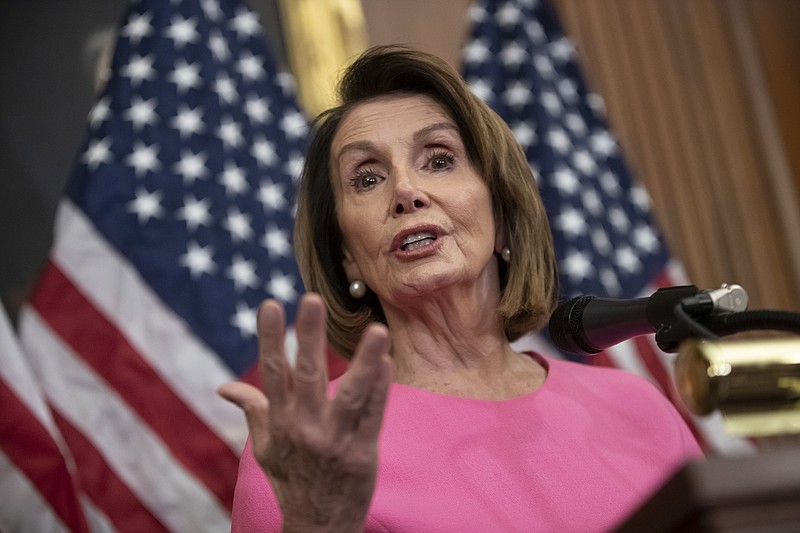A recent Barna Group survey has news for those who read "political realignment" into either the 2016 presidential election or the 2018 midterm elections: Don't overthink it.
While 2016 brought the surprising election of a president nobody believed could win, and 2018 saw the United States House flip from Republicans to Democrats, the results might be better read more as "disenchantment" than permanent realignment.
"[M]ost people who shift political allegiance generally do so out of frustration with their former party," the survey noted. "Very few people are wooed to the other side of the aisle."
Barna suggests one's political affiliation, like one's religion, "is often cemented into us at a young age, influenced by our family and the worldview in which we've grown up."
If any changes are made, they're more of a shift from one political affiliation to none. The same thing has been true, the organization noted, in the growing number of religiously unaffiliated. That shift, it is suggested, is characterized by "disenchantment with an institution and a feeling of distrust toward any similar institution."
We believe the recent American political landscape has borne out Barna's thinking, especially in the last 26 years as baby boomers and younger generations began voting in greater numbers than previous generations who had grown up in the Great Depression and experienced World War II.
The news coverage surrounding the recent death of former President George H.W. Bush brought the beginning of that "disenchantment" shift to mind.
» 1992: Bush, the Republican World War II veteran who was riding high with record popularity from the Gulf War victory a year earlier, plummets in approval during a mild recession. Democratic baby boomer Bill Clinton, who dodged the draft, admitted he smoked marijuana (but didn't inhale) and has a winking record on infidelity, is elected president.
» 1994: Clinton, plagued by various scandals and overreaches in his first two years, sees the U.S. House fall to Republicans after 40 uninterrupted years of Democratic control, along with the Senate.
» 1996: The electorate, though happy with Congress under Republican control, nevertheless re-elects Clinton.
» 2000: Voters, somewhat soured with Clinton after his impeachment, elect Republican George W. Bush president.
» 2004: Despite America's wary involvement in two wars following the 9/11 terrorist attacks, voters re-elect Bush.
» 2006: Now tired of war and Bush's perceived handling of Hurricane Katrina, voters give control of the House and effective control of the Senate back to Democrats.
» 2008: Amid an economy falling into what would be the Great Recession, voters elect Democrat Barack Obama president.
» 2010: In a situation similar to 1994, Obama, plagued by overreaches and voters' buyer's remorse, sees the House return to Republican hands.
» 2012: As with Clinton in 1996, Obama is re-elected, though the House remains safely in Republican hands
» 2014: Unhappiness with Obama growing, voters put Republicans in charge of the Senate.
The 2016 and 2018 elections continued what appears to be 26 years of shifting disenchantment.
The country has not seen such frequent electoral shifts involving the party of the presidency and the control of the House and Senate since the era between 1874 and 1896, four fewer years than the current period.
In the current period, the presidency shifted parties four times, the Senate three times (with three additional times due to ties and independents) and the House four times. In the previous period, during what was called the Gilded Age, the presidency changed parties four times, the Senate five times (with one year in which neither party had control) and the House six times.
According to Barna, while many current voters show their enchantment from election to election, only 16 percent have ever changed their political affiliation. Of those, more men (20 percent) than women (12 percent) have changed their affiliation; more whites (19 percent) than blacks (5 percent) or Hispanics (16 percent); more Republicans (15 percent) than Democrats (14 percent), and more baby boomers (22 percent) than Gen-Xers (14 percent) or millennials (10 percent).
As to where those who did change their affiliation landed, 55 percent of Republicans became Democrats and 56 percent of Democrats became Republicans. But 41 percent of Republicans and 40 percent of Democrats became independents, which, in this case, is less a party than, as Barna puts it, either "a rise of political moderates or a growing disenfranchisement with the two-party system."
We're not sure it's either but more of a four- to six-year itch. As more and more Americans become unmoored from traditions, social mores, religious organizations and political parties, they choose to elect with their gut, their heart or the last social media post they viewed before voting. They don't want the same thing - say, a political party - in charge for too long, and they're eager to try out something shiny and new.
If we're right, your party's time is coming, but, then yours is coming right behind it.
